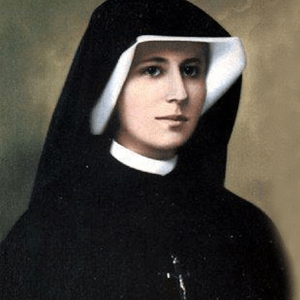
St. Maria Faustina Kowalska, the Apostle of Divine Mercy, was born Helena Kowalska, in Glogowiec, Poland on August 25, 1905. Her family had 10 children, of which she was the third oldest. Her family was devout but poor, and her father was a carpenter.
Read the full St Faustina novena on the novena page. You can also learn more about novenas here.
Who Was St Faustina?
St Maria Faustina Kowalska was a Polish nun who lived in the early twentieth century and to whom Christ gave the mission to spread devotion to His Divine Mercy.
St. Maria Faustina Kowalska, the Apostle of Divine Mercy, was born Helena Kowalska, in Glogowiec, Poland on August 25, 1905. Her family had 10 children, of which she was the third oldest. Her family was devout but poor, and her father was a carpenter.
Faustina said that when she was seven years old, she adored Jesus in the Blessed Sacrament, and it was then that God first began calling her to consecrated religious life.
She completed school when she was 16, and like St. Therese wished to enter the convent at a young age, but her parents did not let her. So she was a housekeeper for several homes over the next few years.
When she was nineteen years old, she saw a vision of Jesus suffering and went to the Cathedral to pray. There Jesus told her to go to Warsaw and find a convent to join.
Faustina obeyed promptly, went to Warsaw without knowing anyone there, and St. James Church was the first she encountered, so she went to Mass there.
Afterwards, she visited several convents, but none were willing to take her in. Then she found the Congregation of the Sisters of Our Lady of Mercy, and the Mother Superior was willing to take a chance on Faustina, provided she would work to earn her keep.
Faustina was given her habit and religious name (Sister Maria Faustina) on April 30, 1926. She was twenty years old. Two years later she took temporary vows as a nun.
Jesus, as the King of Divine Mercy, appeared to Faustina on February 22, 1931. He wore white, with red and translucent rays radiating out from his heart.
Jesus asked Faustina if she would be the Apostle of God’s Mercy and his missionary to the modern world for this purpose.
Jesus also told her to paint an image of Him with the caption “Jesus, I trust in You.”
In addition to the Divine Mercy painting, Jesus said that the Sunday after Easter is to become the Feast of Mercy.
In 1935, Faustina told of the Chaplet of Divine Mercy, which she was given, for the purpose of trusting in Christ’s Divine Mercy.
Two years later, the Divine Mercy image grew in popularity, and Faustina revealed that Jesus gave her the Novena of Divine Mercy as well, which people should pray beginning Good Friday for 9 days leading up to the Feast of Divine Mercy.
St. Faustina died on October 5, 1938.
St. Faustina’s diary, Divine Mercy in my Soul, was published and has been a best selling book in the Catholic world for decades.
St. Faustina was beatified by Pope St. John Paul II on April 18, 1993 and canonized by him on April 30, 2000.